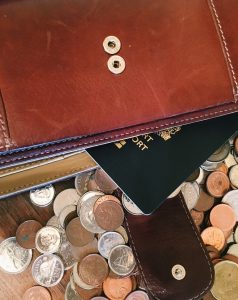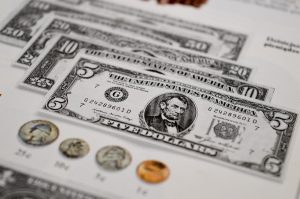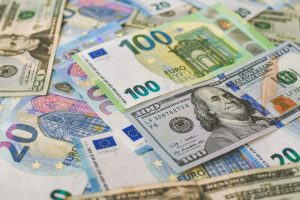The exponential moving average (EMA) is a popular technical indicator used by forex traders to identify trends and potential trading opportunities. Unlike the simple moving average (SMA), which gives equal weight to all data points, the EMA places more weight on recent price action. This makes it more responsive to changes in market conditions and helps traders identify trends more quickly.
In this article, we will explain how to use the EMA in forex trading, including how to calculate it, interpret its signals, and incorporate it into your trading strategy.
What is the Exponential Moving Average?
The EMA is a type of moving average that gives more weight to recent price action. Unlike the SMA, which calculates the average price of a currency pair over a specified period of time, the EMA places more weight on the most recent data points. This means that the EMA reacts more quickly to changes in market conditions, making it a useful tool for identifying trends.
To calculate the EMA, you need to know the closing price of the currency pair you are trading and the length of the EMA you want to use. The formula for calculating the EMA is:
EMA = (Closing Price – EMA(previous day)) x (2/(n + 1)) + EMA(previous day)
Where:
• Closing Price = the most recent closing price of the currency pair
• EMA(previous day) = the EMA value from the previous day
• n = the length of the EMA (e.g. 10, 20, 50, 100)
For example, if you want to calculate the 10-day EMA of the EUR/USD currency pair, you would need to know the closing prices for the past 10 days. You would then use the formula above to calculate the EMA for each day, starting with the 10th day and working backwards.
Once you have calculated the EMA, you can plot it on your price chart to see how it compares to the current market price. If the market price is above the EMA, this suggests a bullish trend, while if it is below the EMA, this suggests a bearish trend.
How to Use the EMA in Forex Trading
The EMA is a versatile tool that can be used in many different ways in forex trading. Here are some of the most common ways that traders use the EMA:
1. Trend Identification
One of the most popular uses of the EMA is to identify trends in the market. By plotting the EMA on your price chart, you can see whether the market is trending up or down. If the market price is consistently above the EMA, this suggests a bullish trend, while if it is consistently below the EMA, this suggests a bearish trend.
Traders can use this information to make trading decisions. For example, if the market price is above the EMA and is continuing to rise, this might be a signal to buy the currency pair, as it suggests that the bullish trend is likely to continue.
2. Support and Resistance Levels
Another way to use the EMA is to identify support and resistance levels. When the market price is above the EMA, the EMA can act as a support level, preventing the price from falling too far. Conversely, when the market price is below the EMA, the EMA can act as a resistance level, preventing the price from rising too far.
Traders can use these support and resistance levels to enter and exit trades. For example, if the market price is approaching the EMA from below, this might be a signal to buy the currency pair, as the EMA is likely to act as a support level.
3. Crossovers
Another popular use of the EMA is to identify crossovers. A crossover occurs when the market price crosses above or below the EMA. This can be a signal that the trend is changing, and traders can use this information to make trading decisions.
For example, if the market price crosses above the EMA, this might be a signal to buy the currency pair, as it suggests that the bullish trend is likely to continue. Conversely, if the market price crosses below the EMA, this might be a signal to sell the currency pair, as it suggests that the bearish trend is likely to continue.
Incorporating the EMA into Your Trading Strategy
The EMA is a versatile tool that can be used in many different ways in forex trading. However, it is important to remember that no indicator is perfect, and traders should always use other tools and strategies to confirm their trading decisions.
When incorporating the EMA into your trading strategy, it is important to consider the length of the EMA you are using. Shorter EMAs, such as the 10-day EMA, are more responsive to changes in market conditions, but can also be more volatile. Longer EMAs, such as the 100-day EMA, are less responsive to changes in market conditions, but can provide more reliable signals.
Traders should also use other indicators and tools, such as support and resistance levels, candlestick patterns, and price action analysis, to confirm their trading decisions.
Conclusion
The EMA is a popular technical indicator used by forex traders to identify trends and potential trading opportunities. By placing more weight on recent price action, the EMA is more responsive to changes in market conditions, making it a useful tool for identifying trends.
Traders can use the EMA in many different ways, including trend identification, support and resistance levels, and crossovers. However, it is important to remember that no indicator is perfect, and traders should always use other tools and strategies to confirm their trading decisions.





